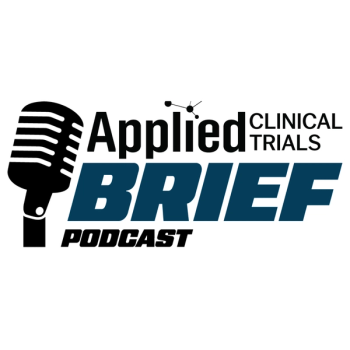“Now is the time to redefine how we assess, act on, and learn from data with a unified, AI-powered data review ecosystem, which delivers fully transparent and traceable insights.”
Honing the Power of AI for Next Generation Trial Oversight and Execution
Key Takeaways
- AI and advanced analytics are revolutionizing clinical trial data management, enhancing risk detection, data aggregation, and analysis for more efficient trials.
- Risk-based quality management and adaptive site monitoring improve trial execution and oversight, safeguarding patient well-being and trial success.
How a unified approach to clinical data management, powered by artificial intelligence and advanced analytics, can elevate clinical trial monitoring and redefine how teams assess, act on and learn from data.
The digital health technology sector is booming, with increasing adoption of new technologies, regulatory backing and the rising complexity of clinical trials driving growth.1 Advanced models like artificial intelligence (AI) are increasingly being hailed as a way to conduct more effective and efficient clinical trials.2
However, it is crucial that AI does not just become a buzz word. To truly seize the opportunities on offer we need to explore the applications which are most useful to the clinical trial environment, understand how AI can be combined with other tools like advanced analytics and showcase how we are already turning artificial intelligence into human intelligence.
The surge in clinical trial data volume and complexity3 makes data management the ideal area to demonstrate how AI tools can be honed to streamline clinical trials and elevate monitoring.
By harnessing AI and advanced analytics and centralizing relevant study data, we can automate the aggregation, review and analysis of clinical and operational data to deliver fully transparent and traceable insights. This enables real-time, cross-functional review that is consistent, complete, and regulatory-ready.
Focusing on the right AI tools
This year the global AI in clinical trials market was valued at approximately $2.7 billion. By 2030, AI is expected to be integrated into 60–70% of clinical trials, saving the pharmaceutical industry $20–30 billion annually.4 With so much investment taking place, it is vital we focus on the applications with the greatest impact on clinical trial efficiency and effectiveness.
AI has countless applications but many of these lack relevance to clinical trial data management. For example, generative AI tools cannot offer meaningful insights into clinical trial data because they lack the required understanding of clinical context.
Instead of discussing AI as a broad term, we need to home in on specific tools which can help us redefine clinical trial data management. These include supervised, and unsupervised, machine learning (ML), as well as deep learning (DL). The FDA has recognized the potential for ML to “significantly enhance” data integration efforts using both supervised and unsupervised learning.5
Supervised ML uses labeled datasets to train algorithms to classify data or predict outcomes accurately. Fast and highly accurate, it still requires the manual labelling of data.
Unsupervised ML uses algorithms to analyze and cluster unlabeled datasets. It can discover hidden patterns or data groupings without the need for human intervention. The longer it runs the more it learns, and the more accuracy increases.
DL is a subset of ML that uses multilayered neural networks to simulate the complex decision-making power of the human brain. DL models use unsupervised learning, but they can also evaluate and refine their outputs for increased precision.
These tools are now being used to empower intelligent risk detection.
Transforming trial execution and oversight
Risk-based quality management (RBQM) approaches have been consistently backed by regulators, most recently in ICH E6(R3),6 the FDA’s 2024 guidance on decentralized clinical trials.7 Today, RBQM is vital for creating a connected framework for smarter clinical trials—and transforming clinical data review into a strategic advantage.
By enabling researchers to identify and prioritize the most critical data, RBQM solutions safeguard both patient well-being and trial success. RBQM platforms leverage advancements in statistics and ML to go beyond traditional data analysis, accelerating result delivery to research teams and facilitating prompt issue resolution.
A vital component of RBQM is centralized statistical monitoring (CSM). CSM, or unsupervised statistical monitoring, can expose forms of study misconduct that may be difficult to identify or characterize during pre-study risk planning. It consists of performing as many statistical tests as possible on all trial data to detect centers with inconsistent data.
This unsupervised approach was tested using data from a large Japanese multicenter trial in advanced gastric cancer. A blinded team was asked to use CSM software to detect intentionally contaminated data points within the dataset. The study found the approach could detect atypical data in a multicenter trial with a specificity better than 93%.8 Because it eliminated the need for time-consuming source data verification, unless triggered by an atypical data alert, the approach freed up resources to be diverted into more safety- and success-critical tasks.
Adaptive site monitoring
Another vital component of RBQM is adaptive site monitoring, powered by ML. Under traditional models, clinical research associates (CRAs) need to consume data from numerous sources to effectively rate site performance and prioritize monitoring visit activities. This is a very labor-intensive process which also results in missed opportunities to optimize site recruitment strategies for future clinical trials.
Adaptive site monitoring offers the ability to ingest data from numerous sources and provide valuable insights into site risk and performance. This empowers study teams to align data verification, review efforts and scheduling of monitoring visits with each site’s specific needs and risks. By circumventing rigid source data review strategies, adaptive site monitoring reduces unnecessary monitoring efforts and prioritizes the use of resources where they are needed most.
User-friendly data visualizations enable CRAs to more efficiently identify and document the key activities to perform during the next monitoring visit. Insights can also help optimize site recruitment strategies for future clinical trials and empower study teams to take timely corrective action.
A DL model for medical coding
A traditional medical coding workflow uses a rules-based automated coding tool, followed by manual review by two human coders. Basic auto-coding tools coupled with synonym lists typically effectively code 70–80% of input terms, leaving 20–30% of terms needing to be manually coded.9
This approach places a significant burden on human coders and introduces the risk of inconsistencies. Synonym lists also become less accurate with changes in medical dictionaries such as MedDRA and WHODrug. Combined, these drawbacks lead to delays and extra costs.
In contrast, a DL model can offer precise, AI-generated coding suggestions for adverse events and concomitant medications at up to 99% accuracy. The model can adapt to different scenarios, removing the need to implement organization-specific scenarios and handle regular upgrades of medical dictionaries.
DL can also deal with high variability in input terms which express the same concept, by using embeddings that encode the meaning of words. For example, ‘ache’ and ‘pain’ have very similar vectors which allows the model to understand that their meanings are close to each other and helps it select the right dictionary entry.
Harnessing DL for medical coding increases accuracy, streamlines coding workflows and reduces manual effort, ultimately increasing speed to market.
Automating data discrepancy detection
Periodic manual data reviews are failing to keep up with the growth in clinical data volume, variety and velocity. By using specialized large language models, we can automate discrepancy detection and query generation, eliminating the need for listings for even the most complicated data driven reviews.
An adaptive learning model can learn from user behavior, including which queries are approved, rejected, or edited, to create a feedback loop and enhance the accuracy of future predictions. Prompt-based review can eliminate the need for listings by allowing users to define checks through flexible free-text prompts.
When issues are identified, query suggestions can be automatically drafted for data manager review and approval. This removes the need to manually locate data points in the electronic data capture system and compose messages from scratch. Natural language scenario creation also empowers non-technical users to self-serve data insights, reducing turnaround time.
A learning model can also be trained to classify queries based on criticality, flagging those which matter most for safety, efficacy, or regulatory relevance. This allows sites to respond more efficiently and Sponsors to focus on high-risk data.
Technology-driven approaches to MSR
Traditional approaches to medical safety review (MSR) rely on manual processes to analyze patient data and safety outcomes from electronic health records, lab results and other sources during clinical trials. Key challenges include infrequent data updates, lengthy visualization preparations, slow outlier identification and review variability and errors.
In contrast, technology-driven processes for MSR allow clinical data managers and medical and safety reviewers to identify outlying values and track changes more accurately. This not only enhances review efficiency and communication but also elevates patient safety. A centralized tool can standardize clinical data review processes, providing pre-made and customizable review dashboards for efficient query management throughout a clinical trial and offering the ability to copy and reuse dashboards across different studies.
As we advance the use of AI-human workflows, we will surface critical trends and enable intuitive, on-demand analysis. Rather than create complex queries we will simply ask in plain English—“show me the patients at risk of liver toxicity.” Within this example, an AI model can then flag patients breaching Hy’s Law thresholds to streamline safety focus. Generative business intelligence could be prompted to show Grade 3 adverse events by cycle, providing tailored visualizations to reviewers to eliminate manual effort and accelerate insights.
Conclusion
Now is the time to redefine how we assess, act on, and learn from data with a unified, AI-powered data review ecosystem, which delivers fully transparent and traceable insights.
Intelligent risk detection, real-time oversight and actionable insights allow us to make smarter, faster decisions to resolve data anomalies in critical areas, streamline the review and reconciliation process across teams and ensure regulatory alignment for successful audits and inspections.
By accelerating risk detection and course correction with AI and advanced analytics, clinical teams can win faster, fail smarter and focus resources where they matter most to bring safe effective therapies to patients sooner.
Richard Young, Chief Strategy Officer at CluePoints
References
https://www.biospace.com/press-releases/clinical-trial-technology-and-services-market-size-to-hit-usd-110-48-billion-by-2034 https://pmc.ncbi.nlm.nih.gov/articles/PMC9974218/ https://www.globenewswire.com/news-release/2021/01/12/2157143/0/en/Rising-Protocol-Design-Complexity-Is-Driving-Rapid-Growth-in-Clinical-Trial-Data-Volume-According-to-Tufts-Center-for-the-Study-of-Drug-Development.html https://www.clinicalleader.com/doc/global-ai-in-clinical-trials-market-trends-current-partnerships-0001 https://www.fda.gov/media/167973/download https://database.ich.org/sites/default/files/ICH_E6%28R3%29_Step4_FinalGuideline_2025_0106.pdf https://www.fda.gov/media/167696/download https://journals.sagepub.com/doi/10.1177/1740774519862564 https://cluepoints.com/a-new-era-of-automation-improving-efficiency-outcomes-with-intelligent-medical-coding/
Newsletter
Stay current in clinical research with Applied Clinical Trials, providing expert insights, regulatory updates, and practical strategies for successful clinical trial design and execution.




